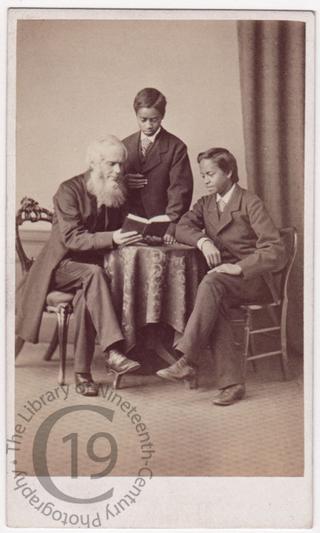
Joseph Sewell, Rasoamiaramanana and Rasoamanana
Born at Great Yarmouth on 30 December 1819, Joseph Stickney Sewell was a missionary active in Madagascar between 1867 and 1876. Although he himself was a Quaker, he worked within the Anglican tradition of the London Missionary Society. He had previously spent many years as a teacher and it was in the field of education that he had his greatest success in Madagascar, though he also watched over the mission’s many congregations with fatherly care and affection. During his nine years abroad, he made one trip home to England, in 1871, taking with him two of his most promising scholars. 'How I should enjoy showing them England!' he wrote in May 1870, when the idea first occurred to him. He also wondered whether ‘two or three years in a good English school might not qualify them for very important service in their own country.’
Rasoamiaramanana (‘Rasoa’) was the son of a government official; Rasoamanana (‘Frank’) was the son of a pastor in Vonizongo. Both boys were about thirteen years old when they left Madagascar. On arriving in England they were placed at Bootham, the Friends’ school in York, where they made rapid progress in their studies. However, Frank’s health suffered in the British climate and he returned to Madagascar in 1873. Rasoa remained in England for two more years, studying at the Flounder’s Institute, a Quaker college in London. On his return, he eventually became a private secretary to the Queen of Madagascar. Frank taught at the missionary school and translated religious texts into Malagasy.
Joseph Sewell spent his retirement with an invalid daughter at Belgrave near Leicester. He outlived two wives and all five of his children. He died on 20 December 1900.
Photographed in 1871 by Thomas B. Latchmore of Hitchin in Hertfordshire.
Code: 121991




